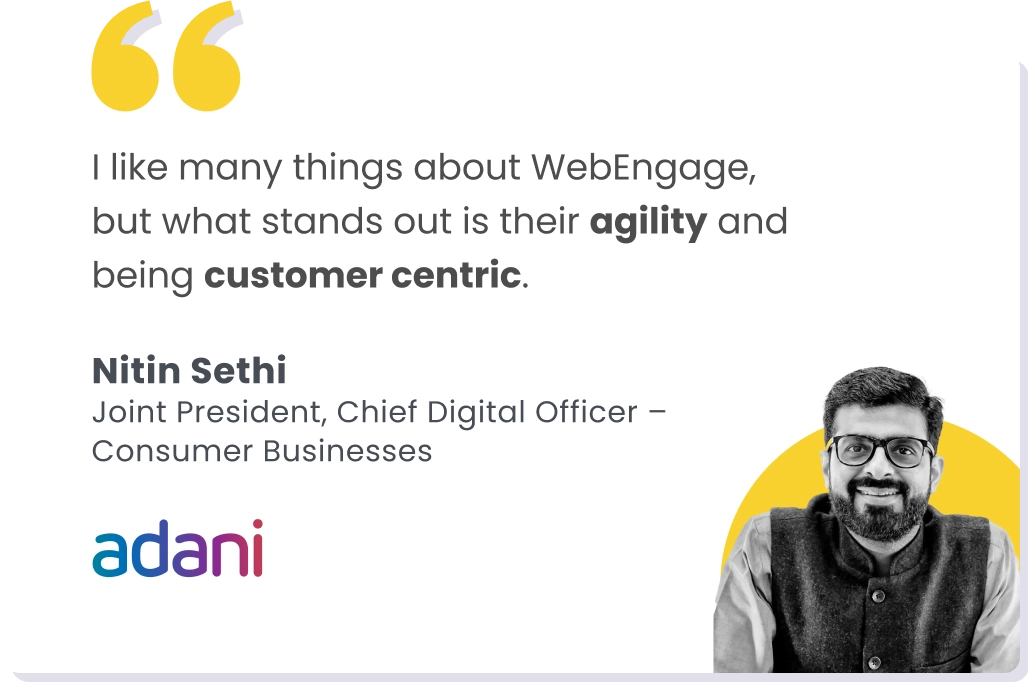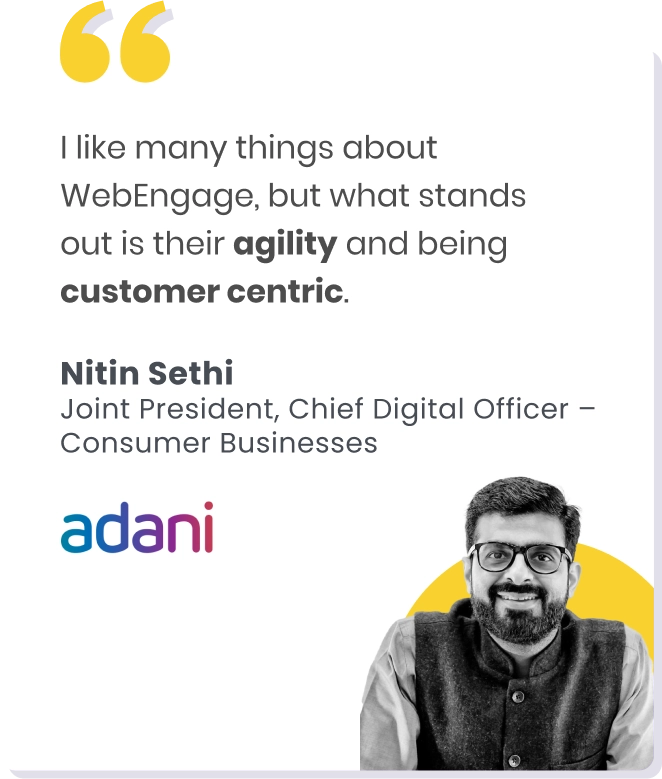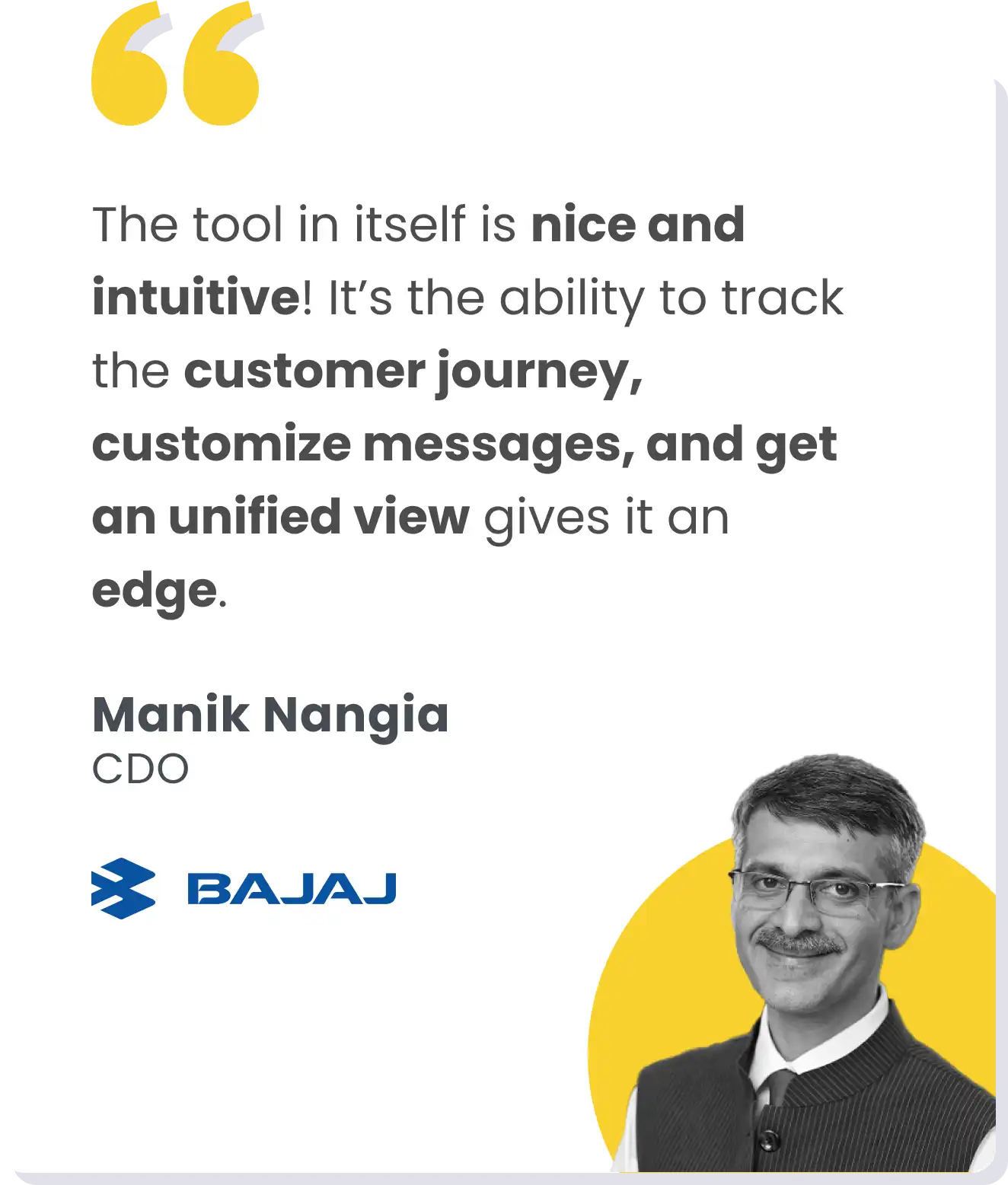During the prestigious EngageMint event organized by WebEngage, Sameer Ratanjankar, Senior VP of Reliance Retail, shared his expertise on the evolution of omnichannel retail and its impact on businesses. The discussion encompassed several significant aspects, including the pre to post-pandemic phases, the unique characteristics of the Indian market, the challenges and opportunities in creating authentic omnichannel experiences, and more.
This article aims to provide a concise overview of the key insights from Sameer’s enlightening conversation, shedding light on the dynamic transformation of the retail landscape.
Pre-Pandemic Phase: Overcoming Grocery Challenges
Cracking the grocery category proved to be a formidable challenge for e-commerce players in India before the pandemic. Acknowledging the transition, Sameer states, “So, pre-pandemic, grocery as a category was very tough to crack because of the deeply ingrained habit of calling your Kirana for home deliveries.” However, when the pandemic hit, and mobility was restricted, consumers turned to online platforms for their grocery needs. This shift in behavior was driven by the convenience and safety offered by e-commerce. As people experienced the freshness and quality of products delivered to their doorstep, trust began to build, resulting in the thriving success of companies such as BigBasket and Jio Mart.
Pandemic Phase: The Convenience Factor
Continuing his take on the shift in consumer behavior, Sameer says, “During the pandemic, grocery adoption grew because of the convenience factor that came in.” The outbreak of the pandemic accelerated the growth of e-commerce, particularly in the grocery segment. With individuals confined to their residences, ordering groceries and daily essentials online became an indispensable convenience. This led to fierce competition amongst online businesses, striving to excel in prompt and efficient deliveries turning convenience to be the major driver of growth for online retail.
Post-Pandemic Phase: Embracing Omnichannel for Success
Looking at the retail landscape post-pandemic, Sameer highlights that as the trust in online shopping increased, the competition intensified. Businesses have slowly realized that adopting an omnichannel strategy is vital in a vast country like India. Sameer adds that with an offline presence, such as Reliance Retail, they leveraged their understanding of offline operations to bridge the gap between online and offline channels. He says, “We are offline first, which gives us the edge of understanding how offline works, and kind of clone that into online space.”
The Uniqueness of the Indian Market:
The Indian retail market differs significantly from other parts of the world. Multinational companies entering India had to adapt their strategies to suit this local ecosystem. Tapping into these attributes of the Indian market, Sameer shares that in the US and European markets, companies can directly buy and sell a product, but in India, you have vendors via whom you have to buy the products. He further adds that “Unlike other countries, in India, 25-30% of the online transactions are cash on delivery with over 22,000 to 23,000 pin codes to cater. Moreover, only 15- 20% of the population speak English in the country.” Sameer says the key is to understand the customer needs and tailor the offerings to resonate with the audience. Everything from the payment mechanisms, customer service, and websites should talk to their customers in order to foster trust and engagement.
Data Unification for Enhanced Customer Experiences:
Discussing how data is pivotal in creating personalized customer experiences, Sameer commented that online platforms can access extensive customer data, enabling targeted communication and insights into purchasing patterns. On the contrary, offline stores foster personalized customer relationships, gaining knowledge about their preferences. Now the crux of it lies in unifying data across channels to build a comprehensive customer profile. Acknowledging the fact that data usage can be challenging, he says, “Customer trust is very difficult to garner. Once you lose it, it’s very difficult to get it back.” Emphasizing on the importance of using it responsibly, he says, “People or companies need to be very particular about how to use customer data.
The Rise of Voice Commerce:
Language is a significant barrier in India, where a substantial portion of the population is not proficient in English. Double-clicking on this, Sameer stresses on the immense potential that voice commerce holds in overcoming this challenge. He believes that voice-enabled platforms can enhance the customer experience by providing information, facilitating transactions, and offering personalized recommendations. Moreover, It has the potential to break language. barriers and drive e-commerce growth. “Any online company which is into service needs a very strong customer support solution because, in India, the mode of communication is still voice. Although there are other mechanisms (chat, email, WhatsApp, and notifications), they would still prefer you to call”, recounts Sameer.
Balancing Customer Service and Support:
Sameer firmly believes that providing prompt and efficient support is crucial to address customer queries, concerns, and returns. He says that “Any online company which is into service needs a solid customer service solution.” Empowering customer service representatives to take decisive actions without unnecessary approvals ensures a seamless experience. Sameer adds that trust, transparency, and quick issue resolution are essential precursors of delivering customer delight.
The Future of Omnichannel Retail:
The future of retail lies in the convergence of online and offline channels to create an interconnected ecosystem. Sameer reveals that India’s online retail industry is projected to grow substantially in the next five years. He says that “Online e-commerce is around 45 to 50 billion industry in the country, and it is slated to be 150 billion in the next five years.” While online-only and offline-only segments will continue to exist, the greatest growth potential lies in the segment betwixt—consumers who embrace both online and offline shopping. And that’s the segment where businesses like Reliance need to focus and capitalize on.
Conclusion:
As India’s retail industry continues to thrive, the growth of omnichannel retail has become a pivotal factor in driving success. Enabling true omnichannel experiences is crucial in retail, allowing customers to research and purchase across online and offline channels seamlessly. Sameer’s insights have revealed the tremendous potential that lies within true omnichannel experiences, allowing businesses to integrate online and offline channels, harness customer data, and provide exceptional service. By embracing this approach, retailers can create a new era of shopping, delivering transformative experiences that resonate with customers and shape the future of retail in India. To iterate in Sameer’s words, “Omnichannel has to be the future of retail in a country like India.”























